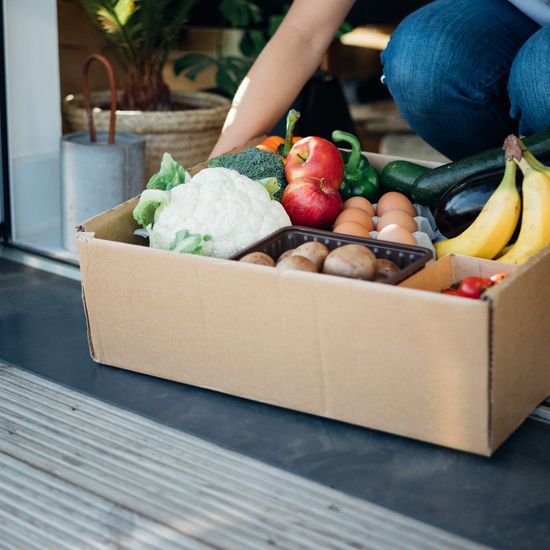By Édaein O’ Connell
Copyright independent

Across the island, apps like Deliveroo and Just Eat, and supermarkets offering home delivery have steadily grown in popularity, a trend that began during the Covid-19 pandemic. Deliveroo alone has seen a 140pc increase in orders in Dublin since March 2020.
Meanwhile, in 2023, Just Eat’s Food Delivery Report found that Ireland’s food delivery and takeaway sector generated an estimated €2.2bn in annual expenditure (ex VAT).
Today’s News in 90 Seconds, Friday, September 12
On average, customers order food about 2.9 times per month, spending €46.49 per order. The report also highlighted a growing use of these services for grocery shopping, with 23pc of people turning to delivery for household essentials.
So it wasn’t surprising to hear Tesco recently announced it was rolling out its rapid delivery service, Whoosh, to even more customers here, promising groceries at your door in just 45 minutes. Already live in Galway and across selected stores in Dublin, the service arrived in Cork earlier this week.
Available to customers within a 4.5km radius of participating stores, Whoosh deliveries will be handled by Tesco’s partner, Deliveroo, with the launch heralding the next echelon in our preference for hassle-free living and our fondness for all things quick and easy.
In more bustling and populated cities like New York and London, being able to order a tube of toothpaste at a moment’s notice to your door is commonplace. Convenience is a way of life.
While Dublin, Cork and other counties have been slower on the uptake, more and more consumers are turning to expediency. But why is it that we are increasingly drawn to the ease of having everything delivered at our doorstep?
For James McGill (39) from South Dublin, using these services isn’t just about convenience, it’s about necessity and accessibility.
In 2020, McGill was diagnosed with CNS, which is lymphoma of the brain. He underwent aggressive chemotherapy and while the treatment was successful, he lost movement in his left arm and leg and was unable to walk or stand.
Through intensive physical rehabilitation, he has been able to regain some movement, but he describes the experience as “being like a toddler learning to do everything for the first time”.
Using a one-armed wheelchair and having full movement in only his right arm, tasks like packing groceries are extremely challenging for him. Home supermarket delivery services allow him to stay independent and manage everyday tasks.
“Fortunately, I live with my parents, so they are here to help,” he says. “But when they are away, being able to order the shopping to my door has been brilliant. The people who deliver are always so helpful as well. They bring the shopping in and help to unpack it, and that’s not part of the job description. Since I started to use a wheelchair, I can’t do that very simple task of just popping to the shops for a few bits.”
McGill says his experience has highlighted the lack of accessibility for wheelchair users in stores and restaurants.
“If I physically go, I always tend to have a few in mind that I know I can definitely navigate,” he says. “But even then, the ability to pack what I got or push a trolley is non-existent. I’ve been fortunate to draw attention to the gaps in accessibility when doing something as simple as going to the supermarket or heading to a restaurant, but these delivery services do help you reclaim a sense of independence.”
Beyond practicality, order-and-deliver platforms can also help some shoppers save money. For Aishling Grimes (30) from Kerry but now living in Dungarvan, Co Waterford, using on-demand services has made her more mindful of her spending habits.
“When you are in a shop or a restaurant, your eyes can be bigger than your stomach,” she says. “You can easily add more to your trolley without thinking, or order more at a fast food chain. When you have to go online and add the products to your basket, you see the tally as you go. You aren’t as enticed by special offers or by how nice something looks. You buy what you need within your budget.”
Despite the savings, delivery services don’t come without extra costs. Dunnes Stores offers free home delivery on grocery orders over €50 in the Republic of Ireland, but for smaller orders or non-grocery purchases, a delivery fee of €4, €6 or €8 applies, depending on the chosen time slot.
Being able to get your essentials delivered to the door during those really busy times is such ease, but I still like going to the physical shop
Meanwhile, for apps like Deliveroo and Just Eat, fees are variable and depend on your location, the restaurant and the order value.
As a new mother, Grimes also says home shopping services make her days much easier, especially when every minute counts and she is juggling feeding and napping.
“There’s a lot to think of,” she says. “So being able to get your essentials delivered to the door during those really busy times is such ease, but I still like going to the physical shop and it’s nice to get out and about and meet people too. I think a mix is good.”
While takeaway delivery services such as Deliveroo and Just Eat are less readily available in Waterford than in Dublin, Grimes and McGill remain mindful of recent criticism and ethical concerns surrounding some delivery apps.
Drivers for home delivery services offered directly by retailers like Tesco are generally employed on permanent or seasonal contracts. However, Tesco’s Whoosh service relies on a third-party platform in the form of Deliveroo, meaning the drivers are working for the app provider rather than Tesco itself.
This sector has increasingly come under scrutiny for its treatment of workers. Riders often face precarious pay and are classified as self-employed, meaning they are denied essential protections like sick leave, insurance and parental benefits, leaving them with little power to challenge unfair conditions.
On the road, they confront real dangers, from traffic accidents to assaults, while opaque algorithms dictate who gets orders and how much they earn. Critics argue that without transparency and stronger safeguards, the industry is prioritising efficiency over the well-being of its workers.
On Valentine’s Day last year, food delivery workers in Dublin organised a strike to protest these conditions, which coincided with similar actions by riders in the UK and the US.
Professor of Information and Communication Studies at UCD Kylie Jarrett is currently leading a significant ERC Advanced Grant research project exploring the rapidly growing ecosystem of livelihoods generated through digital platforms. She points out that although these platforms let some workers pick up extra work on their own terms, the problems are still very obvious.
“These platforms encourage and nudge you to work at certain times, which actually means that autonomy of work just kind of disappears as well,” she says. “It’s also a risky activity with bikes being stolen and attacked. It’s not a transparent industry. It becomes quite murky.”
Jarrett says that addressing concerns around delivery platforms will require clearer employment structures, better regulatory alignment, occupational health and safety measures and increased transparency. Until then, she urges consumers to consider the ethics of how they interact with delivery workers and the platforms themselves.
“Check whether the rider is actually receiving your tip because sometimes the platforms withhold them,” she says. “Often it’s better to tip the rider directly rather than through the app. Learn more about their working conditions. If the weather is terrible, ask yourself: ‘Would I go out in this?’ If not, then maybe don’t expect someone else to deliver your takeaway.”



